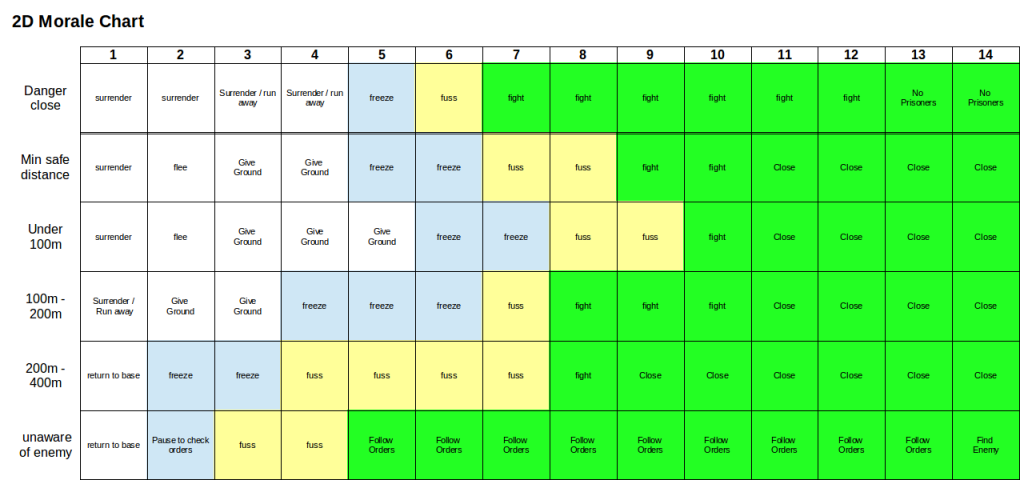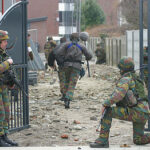Further to the previous post Faith in Morale I’ve tried to synthesize the varioius readings on military psychology into a set of morale rules that might give a realistic ebb and flow to an engagement. I’ve not had a chance to test these yet, but here’s what the chart looks like.

Reading through the various OR type publications it seems to me that morale is affected by proximity to both friends and the enemy. The closer solders get to the enemy the more they seem to do things other than follow orders. This is not really a surprise, but it’s nice to see the research back up the gut feel.
Where I can find hard numbers for things I have used them to construct the 2D morale chart. In some ways this is sort of arbitrary, the numbers aren’t comprehensive enough to complete it. I’ve taken distance from the enemy as one axis and propensity to fight as the other axis. Probability isn’t as straightforwards as counting the squares, as I’ve chosen to use a 2d6 roll on this chart. This tends the answer towards 7 and I have used the probabilty of a given result (or greater) as the method for putting the shading on the boxes. Where certain conditions make something more or less likely the difference from the probability of 7 or more is what I’ve used to decide whether the die modifier would be +/- 1, 2 or 3 (most end up as +/-1).
I’ll post up more of this, along with some ideas on how I expect it to work, in a later post. Broadly though each glob of troops will have a marker on the chart showing their current morale state. Each time morale is tested they will roll 2d6 and modify. Scores of 6-8 (about 45%) will remain unchanged. scores of 9-11 will improve morale and 12 will improve it and move the unit closer to the enemy (except for defenders in prepared positions). Scores of 4 or 5 will decrease morale, a 2 or 3 will decrease morale and cause the soldiers to give ground back to cover.







One thought on “2D Morale Chart”